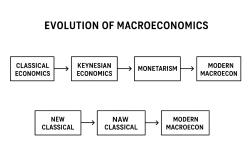What is the difference between Apy and interest?
APY (Annual Percentage Yield) and interest are both financial terms related to the return or earnings on an investment or deposit, but they represent different aspects of the return and are calculated differently. Here's the key difference between APY and interest:
Interest:
- Interest is the amount of money that is earned or paid on an investment, loan, or deposit. It represents the return on the principal amount (the initial amount of money) over a specified period.
- Interest can be expressed as a fixed dollar amount or a percentage of the principal (known as the interest rate).
- Interest is calculated based on the principal, the interest rate, and the time period over which it is earned or paid. The formula for simple interest is: Interest = Principal x Interest Rate x Time.
APY (Annual Percentage Yield):
- APY, on the other hand, is a standardized way of expressing the annual interest rate, taking into account the effect of compounding. It reflects the total return on an investment, including interest and the effect of compounding, expressed as an annual percentage.
- APY is typically used to compare the relative returns on different financial products, such as savings accounts, certificates of deposit (CDs), and other interest-earning accounts.
- APY accounts for how often interest is compounded within a year (e.g., annually, quarterly, daily), and it provides a more accurate representation of the annual return on an investment than a simple interest rate.
In summary, the primary difference between APY and interest is that interest is a straightforward measure of the return earned on a principal amount, while APY takes into consideration the impact of compounding, providing a more comprehensive and accurate representation of the annual return on an investment. When comparing financial products, it's often more useful to look at APY, as it accounts for the compounding frequency and allows for a better comparison of different investment or savings options.
APY vs. Interest: Understanding the Difference
In the realm of finance, the terms "APY" and "interest" are often used interchangeably, but they have distinct meanings and implications. Understanding the difference between APY and interest is crucial for making informed financial decisions.
Interest:
Interest is the compensation paid to a lender by a borrower for the use of their money. It is typically expressed as a percentage of the principal amount borrowed. The interest rate determines the amount of interest earned or paid over time.
APY:
APY stands for Annual Percentage Yield. It represents the effective rate of return on an investment, considering the compounding effect of interest. Compounding occurs when interest is earned on both the principal amount and the accumulated interest from previous periods.
Key Differences:
Compounding: The main difference between APY and interest lies in the compounding effect. APY takes into account compounding, while interest does not.
Frequency of Compounding: The frequency of compounding also affects APY. The more frequently interest is compounded, the higher the effective APY will be.
True Rate of Return: APY provides a more accurate representation of the true rate of return on an investment, considering the impact of compounding.
Implications:
The choice between different savings accounts or investments often hinges on APY. A higher APY indicates a higher potential return on your investment.
Interest and APY: Unraveling the Terminology
Interest and APY are fundamental concepts in finance that play a significant role in various financial decisions.
Interest:
Interest is the driving force behind many financial transactions, including loans, savings accounts, and investments. It is a crucial factor in determining the overall cost of borrowing or the potential return on investments.
APY:
APY is a more sophisticated measure of return, considering the compounding effect of interest. It is particularly important when comparing investments with different compounding frequencies.
Demystifying APY and Interest in Finance
Understanding APY and interest is essential for navigating the financial world effectively.
Savings Accounts: When choosing a savings account, compare APY to maximize your earnings.
Investments: APY is a key consideration when evaluating investment options, such as certificates of deposit (CDs) or bonds.
Loan Comparisons: When comparing loans, consider the interest rate, which directly impacts your repayment obligations.
Financial Literacy: Understanding APY and interest empowers you to make informed decisions that align with your financial goals.
Conclusion:
APY and interest are fundamental concepts in finance that influence various financial decisions. By understanding the difference between APY and interest, you can make informed choices regarding savings, investments, and loans, ultimately achieving your financial objectives.













